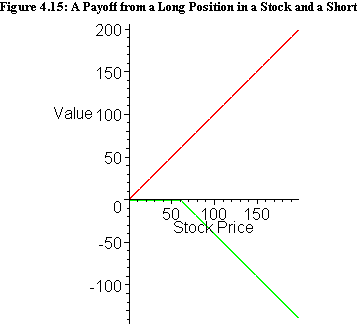
:max_bytes(150000):strip_icc()/ShortSellingvs.PutOptions-eff3cf41a5f549978c295eef47fbc2bd.png)
This is the maximum you can gain from the trade. Short put strategy has limited upside, equal to the cash you get when selling the put option in the beginning.You want the underlying price to end up above the strike price, so the put option expires worthless and you keep the entire premium. In other words, when selling a put option, you want the underlying security to not go down, or not move at all (assuming you’ve sold an out of the money put).It is also a short volatility strategy, as the value of a put option declines when volatility decreases, which means your short put position becomes more profitable.It is generally profitable when the underlying price goes up (or doesn’t go down at least). Short put strategy is directional and bullish.You can also see it in the chart, where the P/L line crosses the zero line at 42.15. This particular short put trade is profitable if the underlying ends up above 42.15 if ends up below this price, the trade will be a loss. Using the same example as above, strike price is $45 and initial option price is $2.85, which makes the break-even equal to Short put B/E = strike price – initial option price

The break-even point of a short put position is exactly the same as long put break-even. Short put payoff = ( initial option price – MAX ( 0, strike price – underlying price ) ) x number of contracts x contract multiplier Short Put Break-Even Point Short put payoff per share = initial option price – MAX ( 0, strike price – underlying price ) Put option value at expiration = MAX ( 0, strike price – underlying price ) Short put payoff per share = initial option price – option value at expiration There are again two components of the total profit or loss: If you have seen the explanation of long put option payoff formulas, you will find the short put payoff formulas are exactly the same, only with opposite signs, as you are now taking the other side of the trade. In our example the risk ($4,215) is almost 15x greater than the potential gain ($285). The risk-reward ratio is usually quite unfavorable with a short put position, as the maximum possible loss is usually much higher than potential profit of the trade. In our example the maximum possible loss is equal to the strike price ($45) less the initial option price ($2.85), which is $42.15 per share, or $4,215 for one option contract representing 100 shares. Total loss from the trade is therefore equal to the strike price less the initial amount you have received when selling the put. Because the underlying is now worthless, you lose the amount equal to the strike price (per share). The put option is exercised, which makes you as the option seller buy the underlying at the option’s strike price. The worst case scenario is when the underlying price drops to zero.

In our example, the maximum possible gain is $2.85 per share, or $285 for one option contract. For this to happen, the underlying security must end up at or above the put option’s strike price at expiration. If the option expires worthless, there is no more cash flow from the trade and you keep all the initial cash, which is also your total profit. The maximum you can gain from a short put trade is the amount you receive at the beginning when selling the put. In this example we have sold one contract of a 45 strike put option for the price of 2.85 per share, which is $285 for one option contract representing 100 shares. Let’s use the example from the screenshot above to explain the best and worst case scenario for a short put strategy. Below the strike price your profit declines in proportion with the underlying price. Maximum profit is reached when the underlying security ends up at or above the put option’s strike price and the option expires worthless. The payoff is inverse of long put position, which is the other side of your trade. Drawing Option Payoff Diagrams in Excel.Call, Put, Long, Short, Bull, Bear: Terminology of Option Positions.


 0 kommentar(er)
0 kommentar(er)
